
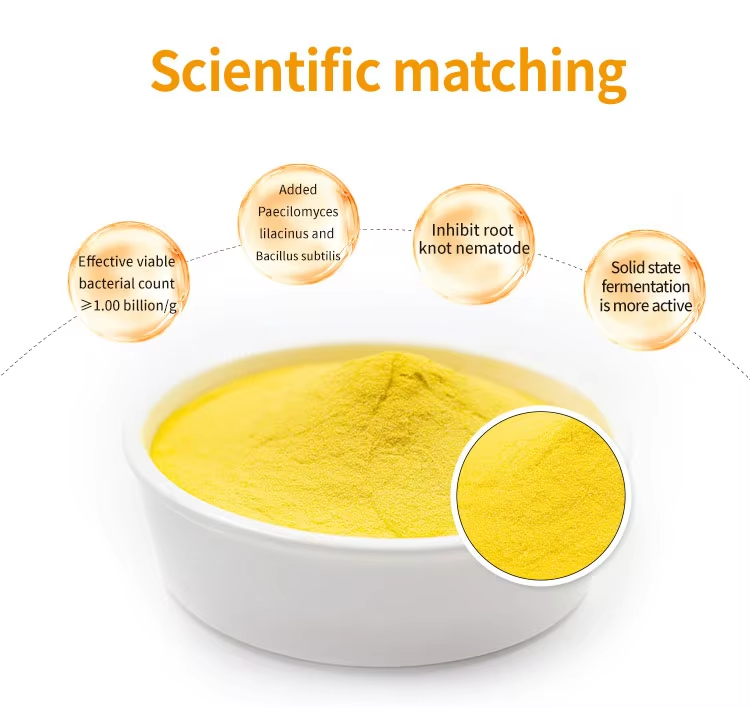
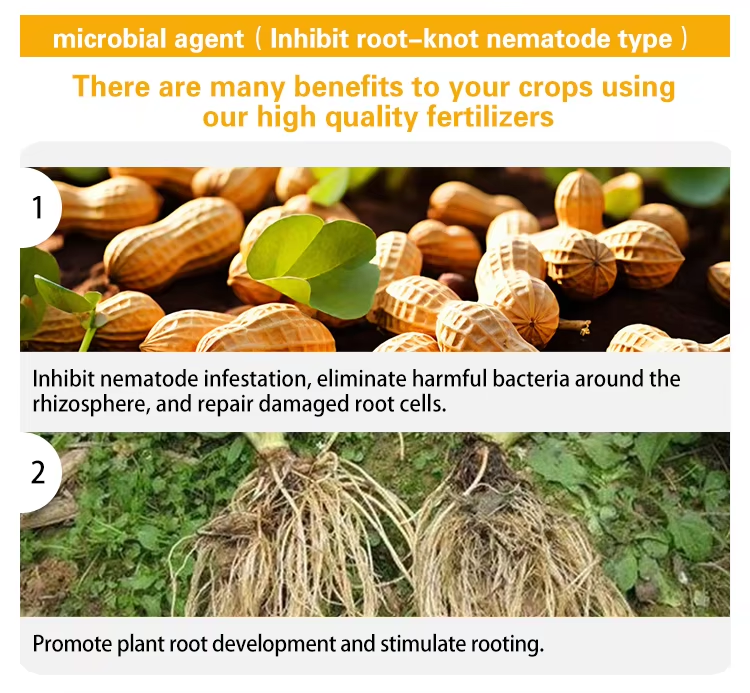
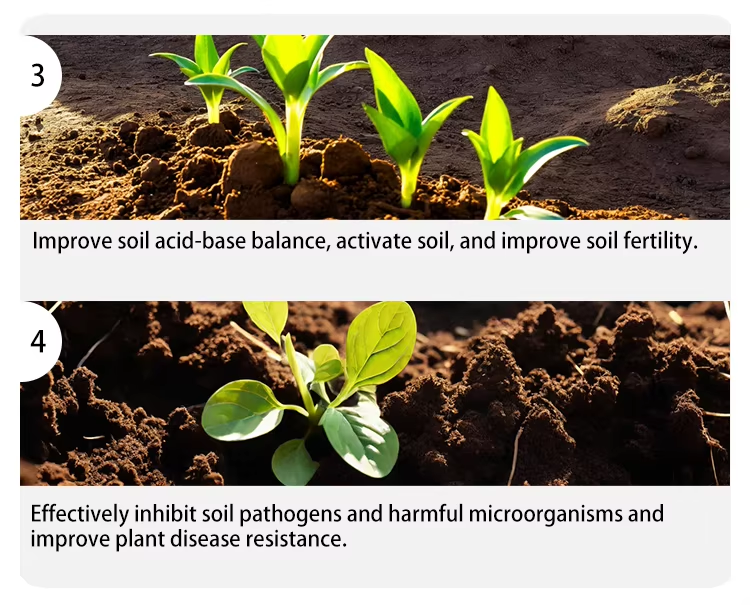
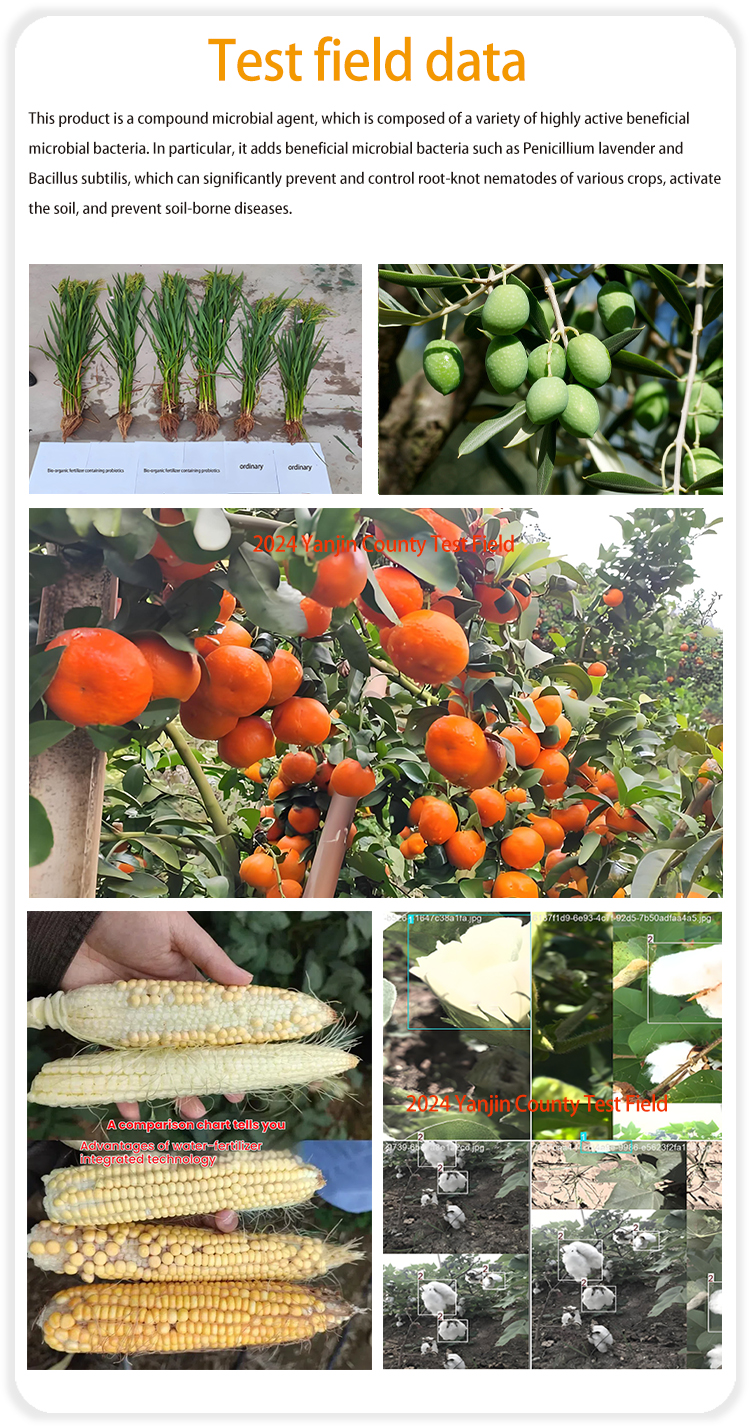
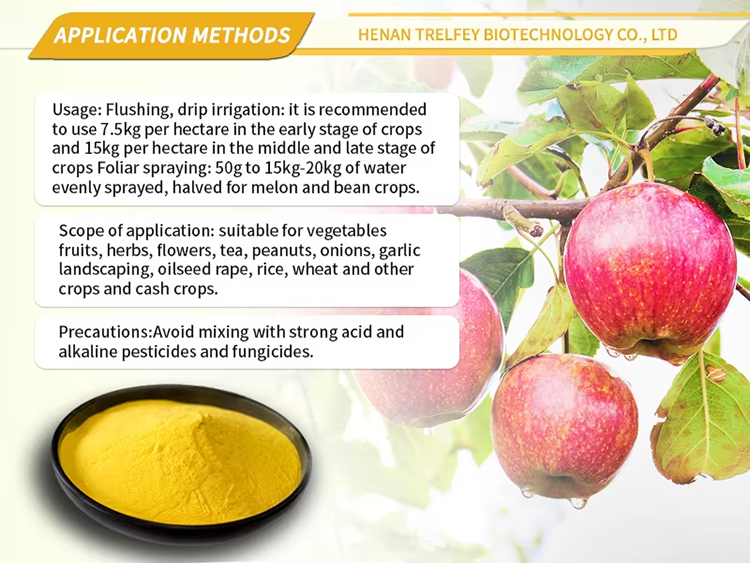
Biological microbial agents : Inhibit root knot nematode
Scientific Overview
This high-efficacy composite microbial inoculant leverages synergistic strains of Purpureocillium lilacinum and Bacillus subtilis to target Root Knot Nematodes (Meloidogyne spp.), soil-borne pathogens, and soil degradation. Engineered for sustainable intensification, it enhances crop resilience, yield quality, and soil health across diverse agroecosystems while ensuring zero chemical residues.
NO.1: Technological Superiority & Mechanism of Action
-
Dual-Strain Synergy (Inhibit Root Knot Nematode):
-
Purpureocillium lilacinum: Parasitizes nematode eggs/juveniles via chitinase/protease enzymatic degradation.
-
Bacillus subtilis: Secretes cyclic lipopeptides (surfactin, iturin) suppressing nematode motility and pathogenic fungi (Fusarium, Rhizoctonia).
-
-
Ultra-High Purity & Viability:
Precision-controlled submerged fermentation (50L bioreactors, strain-specific pH/temperature protocols) followed by centrifugal concentration (10,000 × g) achieves pre-formulation titers >100 billion CFU/mL. Aseptic processing eliminates contaminant microbes. -
Soil Function Restoration:
-
Nutrient Solubilization: Organic acid production liberates fixed P/K.
-
Biostimulation: IAA & GA₃ phytohormones boost root biomass by 20–40%.
-
Detoxification: Degrades allelopathic compounds causing continuous cropping障碍 (replant disease).
-
-
Enhanced Biocontrol Spectrum:
Induces Systemic Resistance (ISR) via upregulation of pathogenesis-related (PR) proteins and biofilm formation to exclude pathogens. -
Stability Optimization:
Chitosan-based microencapsulation (2% w/w) during fluidized-bed drying (45°C) ensures >90% spore germination after 12-month storage.
NO.2: Precision Application Protocol
Critical Pre-Activation:
Dissolve inoculant in lukewarm water with 1–2% non-sulfured brown sugar. Activate 30–60 min in shade. Note: Sugar metabolism increases microbial ATP synthesis, elevating colonization kinetics 3–5 fold.
| Method | Dosage per Hectare | Frequency |
|---|---|---|
| Drip Irrigation | 7.5 kg (early), 15 kg (mid-late) | 3–4 apps/season |
| Foliar Spray | 50g in 150–200L water | Reduce 50% for cucurbits/legumes |
| Root Drench | 40g in 30L water/plant | Transplanting/fruiting stages |
NO.3: Universal Crop Compatibility
*Optimal results verified across 150+ species:*
-
Vegetables: Tomato, bell pepper, eggplant, cabbage, broccoli, carrot, potato, cucumber, melon, soybean, snap bean
-
Fruits: Citrus, grape, apple, strawberry, banana, mango, blueberry, kiwi, papaya
-
Cereals: Rice, wheat, maize, barley, oats
-
Economicals: Coffee, tea, cotton, sugarcane, tobacco
-
Medicinals: Ginseng, astragalus, goji berry, echinacea
-
Ornamentals: Rose, orchid, chrysanthemum, turfgrass
NO.4: Cutting-Edge Production Workflow
-
Strain Amplification:
-
P. lilacinum: 28°C, pH 6.8, aerobic fermentation (72h).
-
B. subtilis: 37°C, pH 7.4, fed-batch culture (48h).
→ Centrifugal concentration to 10¹⁰ CFU/mL.
-
-
Carrier Engineering:
Sterilized composted straw : bentonite (3:1) adjusted to 35% moisture. -
Solid-State Fermentation:
Dual-strain co-inoculation (5% v/w), 28°C, 72h with intermittent aeration. -
Stabilization:
Chitosan coating → fluidized-bed drying ≤45°C → packaging.
NO.5: Operational Safeguards
-
Incompatibles: Copper-based fungicides, streptomycin, extreme pH inputs.
-
Storage: <30°C, RH<70%, UV-protected packaging.
-
Heavy Metals: As<75ppm, Pb<100ppm, Cd≤10ppm, Cr≤150ppm, Hg<5ppm.
-
Shelf-Life: 12 months post-manufacture (see batch code).
Technical FAQ: Microbial Inoculant (Inhibit Root Knot Nematode)
Q1: How does this inoculant suppress nematodes?
A: Purpureocillium lilacinum parasitizes juvenile nematodes and eggs through direct hyphal penetration, while B. subtilis produces nematicidal metabolites (e.g., bacillomycin D), reducing RKN populations by 70–90% within 45 days.
Q2: Can it be tank-mixed with NPK fertilizers?
A: Compatible with most organic/synthetic fertilizers at pH 5.5–8.0. Avoid mixing with anhydrous ammonia or high-salinity (>6 dS/m) solutions – apply sequentially with 48h interval.
Q3: What is the rhizosphere colonization mechanism?
A: Strains utilize root exudates (e.g., malic acid) as chemoattractants. Biofilm formation establishes microcolonies within 72h, creating a protective “microbial shield” against invaders.
Q4: Does it alleviate continuous cropping (soil sickness)?
A: Yes. Degrades phenolic acids (e.g., p-hydroxybenzoic acid) and auto-toxins while rebuilding beneficial microbiome diversity (↑ 30% Actinobacteria).
Q5: Why is brown sugar mandatory for activation?
A: Sugar provides C-source for glycolytic respiration, triggering ATP-dependent spore germination and upregulating adhesion genes (epsD, pelA) critical for root attachment.
Sustainability Validation:
Third-party trials confirm 22–37% yield increase in nematode-infested fields, 45% reduction in chemical nematicide use, and SOC elevation of 0.8–1.2% after 3 seasons. Deploy this next-generation bio-solution to transform soil resilience and crop profitability.
- If you are interested in this product, or have any questions that need to be answered, you can find us at any time through the chat icon in the lower right corner of the webpage. Of course, you can also check our other social media (such as Linkedin) to learn more about us.
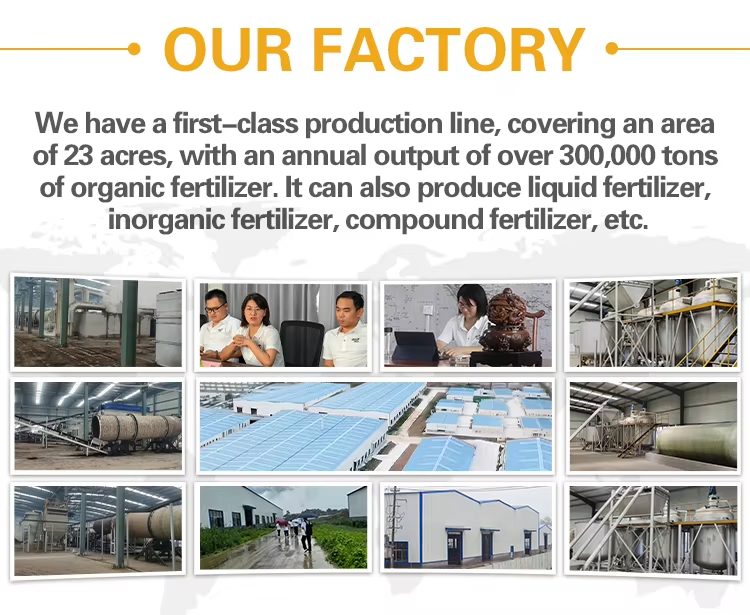




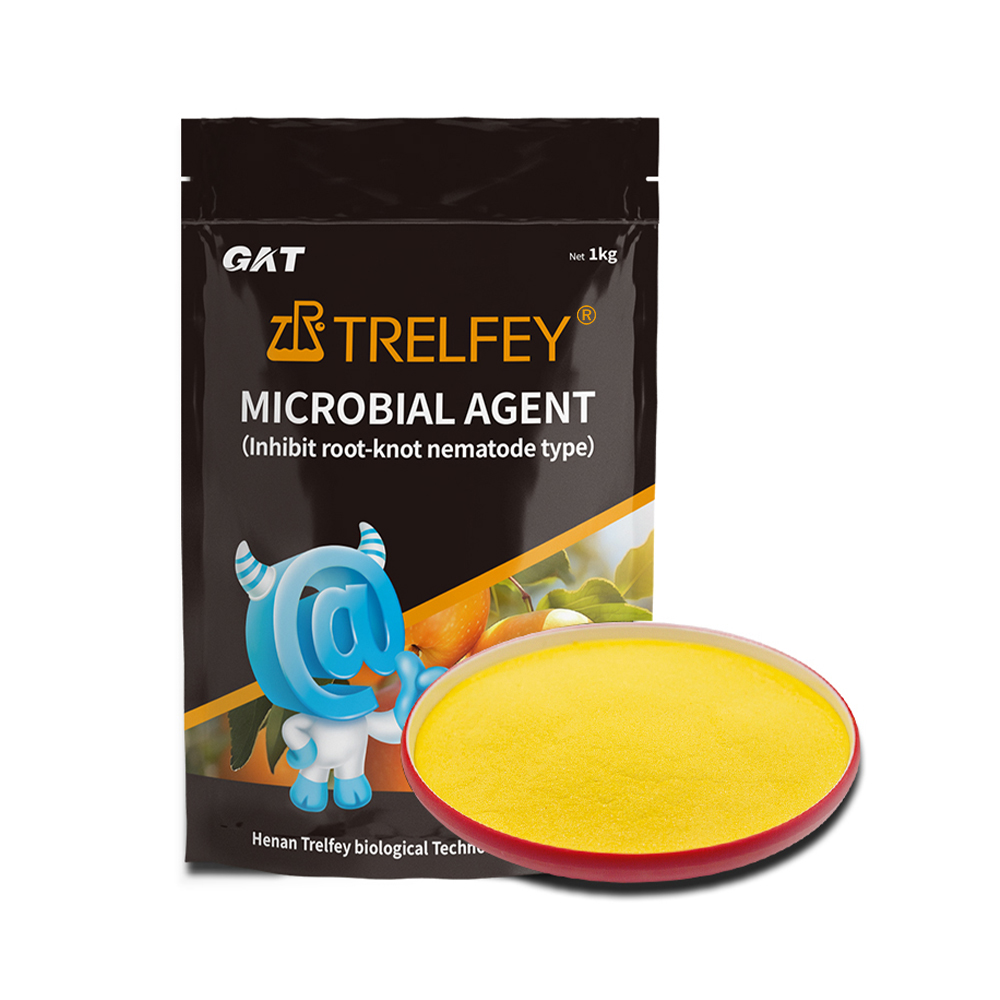
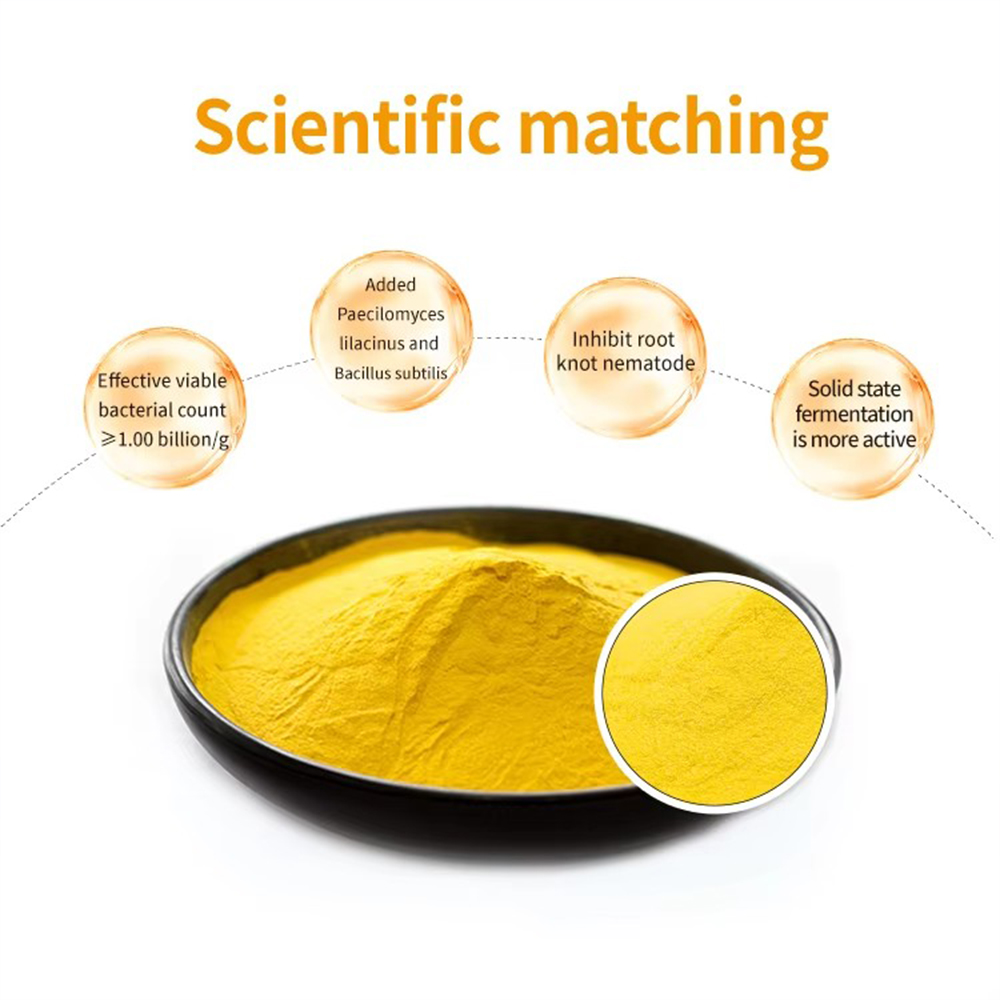
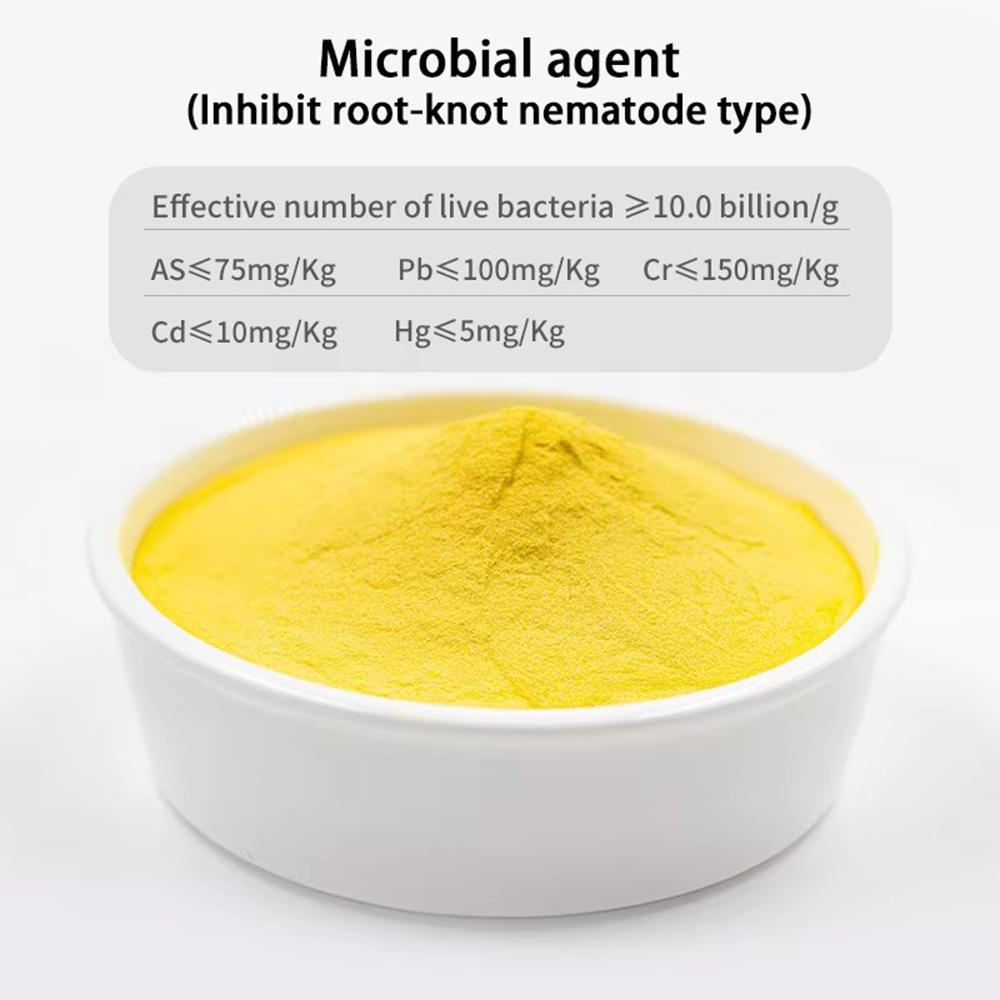
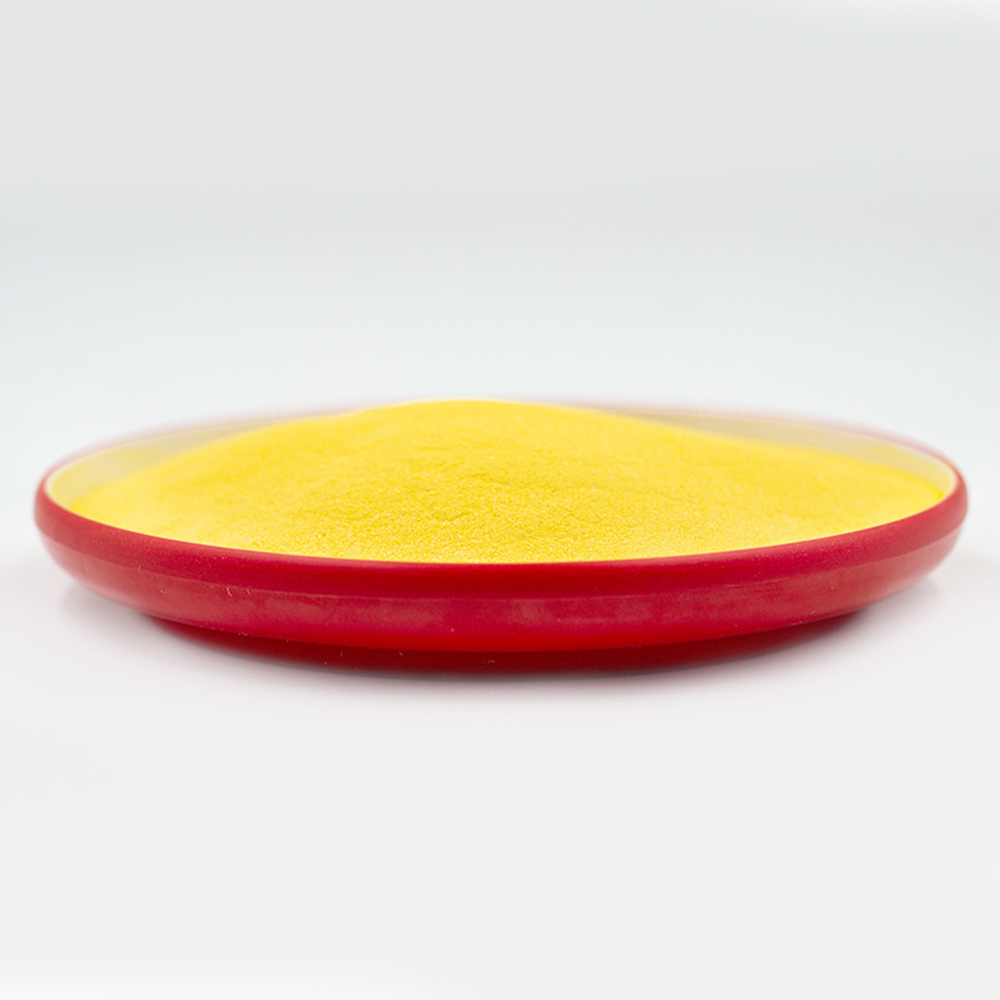
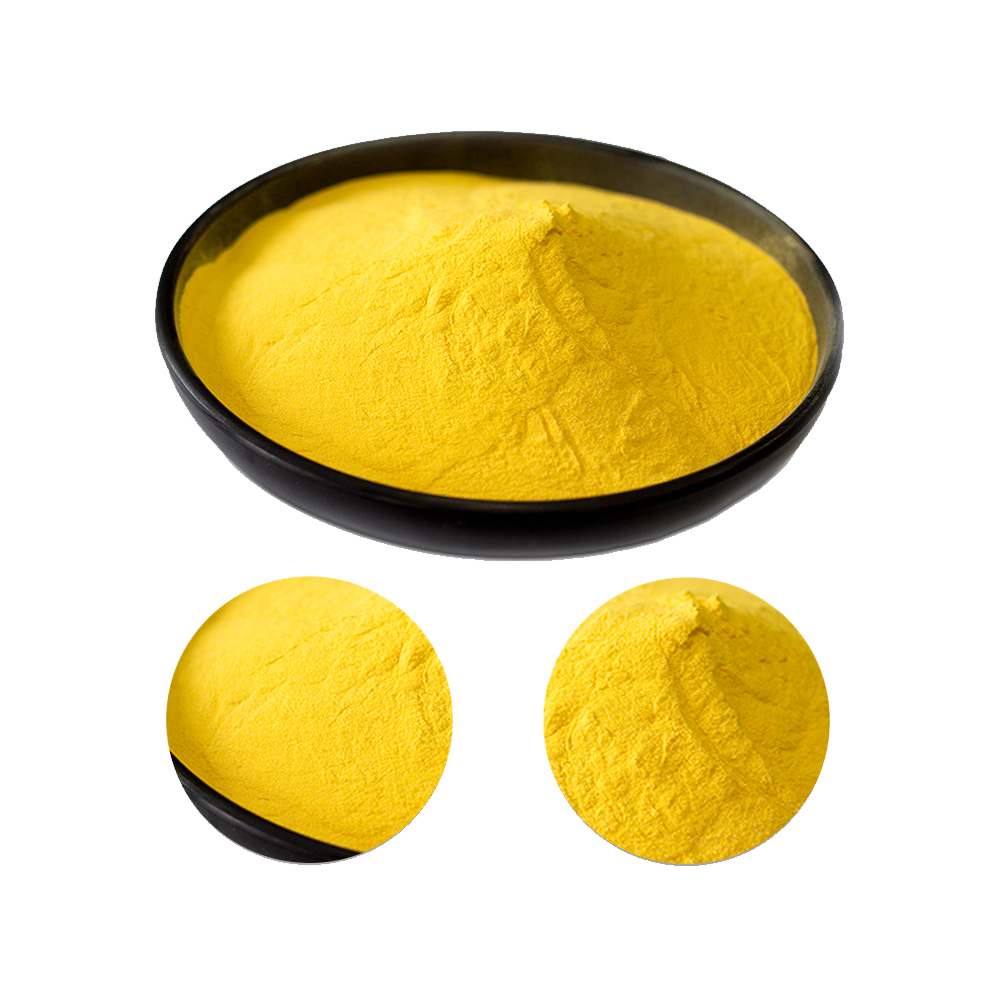
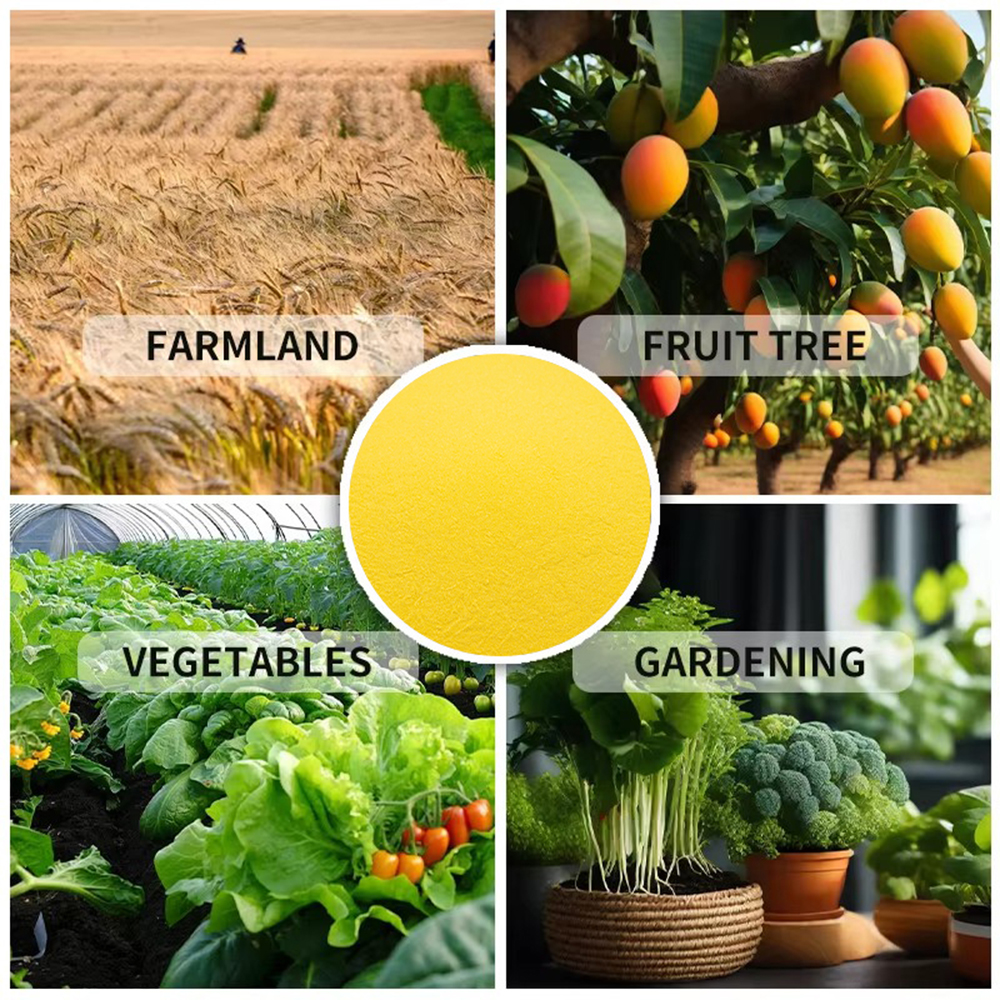
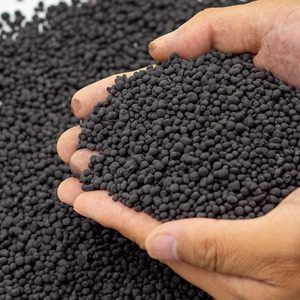
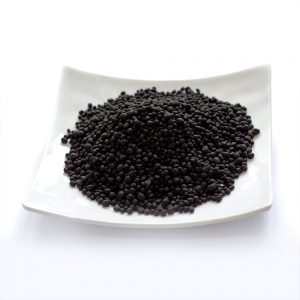
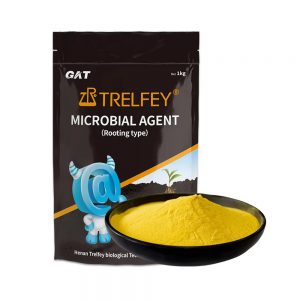
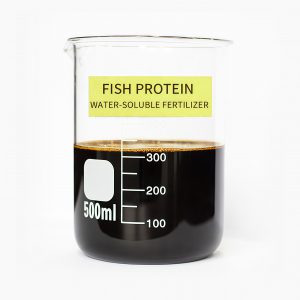
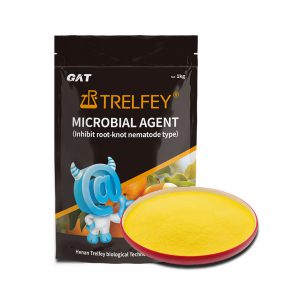
Reviews
There are no reviews yet.